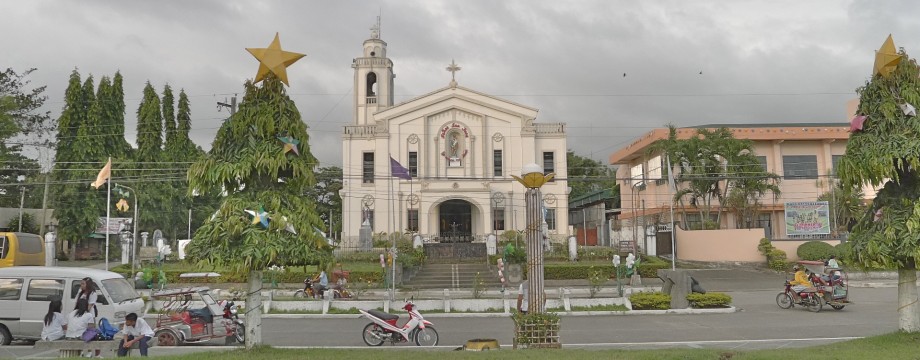The Church of Bacarra:
About the Church:
The town of Bacarra was founded by Augustinians on 18 September 1590, headed by Fr. Benito Mena who was a native of Vigan. The church dates back to the 16th century. Construction was supervised by Fray Felipe Fernandez of the Order of Saint Augustine. When the first building was destroyed, it was rebuilt in 1700 and was finished by 1706 headed by Fray Diego de Mendrosqueta, Fray Miguel Abiol and Fray Antonio de Villanueva. The church was damaged by an earthquake the following year and later by yet another one. The present church was rebuilt by Fray Juan Martin that was dated around the middle of the 19th century.
Indigenous materials were used for the construction. Coral bricks made of sticky clay and molasses mixed with leaves and tree trunks of a tree soaked in water or “sablot” were used instead of cement, granite or adobe stones. The mixture resulted in a sticky fluid which was then combined with lime from ashes of burnt shells. The bricks were pieced together with stucco, the mixture beaten to paste. All the labor was manual.
Architecture of the bell tower – Its bell tower, more popularly known as “Torre Ti Bacarra” or “torre”, was the town’s most prized heritage. It was constructed by Fr. Bergier, OSA in 1828. It stood 50 meters high with three storeys. It has a 16 x 16 meter base that gradually narrows at the top. Topping it is a heavy bronze bell.
On 19 March 1931, the feast of Saint Joseph, the bell tower suffered its first major destruction. An earthquake caused the tower to have a leaning posture from the earthquake for more than half a century. The locals called it the “Bowing Belltower of Bacarra” while the tourists referred to it as the “Leaning Tower of the North.” In 1971, another earthquake further deformed the tower, yet the ruins attracted even more tourists. After the earthquake, the tower was preserved by placing support on the walls of the remaining structure. In 1981 and on 17 August 1983, another earthquake occurred and the tower finally gave way and was left with its present flattened top. In 1973, the tower became a national cultural treasure according to Presidential Decree 260.
Convent – The parish convent’s exterior was made of bricks held together by stucco. The interior was made with fine hardwood. The floor area extends to 900 square meters in two levels. Before being ruined, the convent had an azotea with a staircase. The convent was formerly occupied by the clergy and church staff. It also served as the school building of the St. Andrew Grade School. In the 1980s, the convent was declared as unsafe for habitatation. The present ground floor of the convent was turned into a parish hall and a smaller part of it was used as a place for religious artifacts.
Parish – The parish lot used to be an encomienda which was under Captain Castillo and Andres Hermosa. It was established on 26 June 1591 but was formally accepted by the Augustinians on 29 December 1598. When the ministry of Bacarra was accepted, it was dedicated to San Andres de Apostol. The community’s first Filipino pastor was Fr. Atanacio A. Albano. (Source: Wikipilipinas)
Other Pictures of the Church:
- The Church of Bacarra
- Image of Saint Andrew
- The Church Main Entrance
- Interior of the Church
- The Retablo Mayor
- The Bacarra Church Bell Tower






















